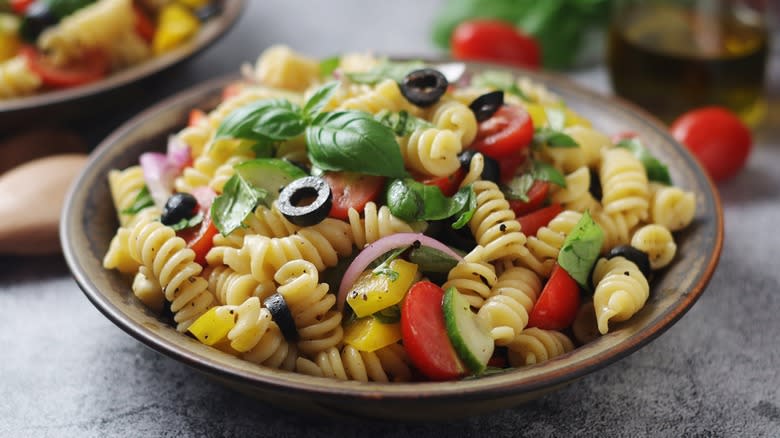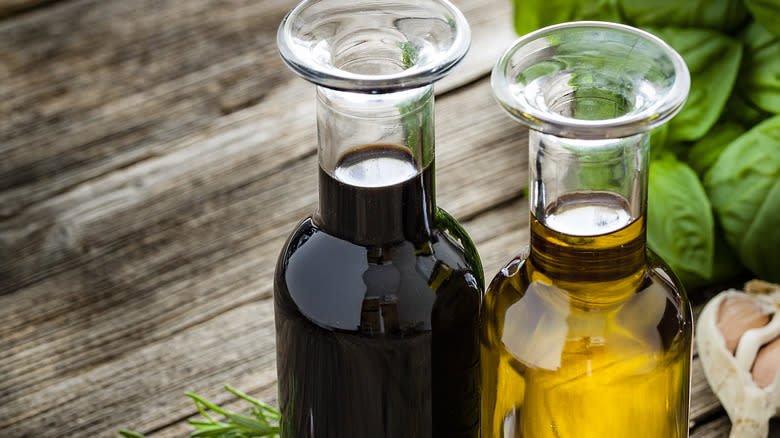Swap Italian Dressing With Balsamic Vinegar For A Richer Pasta Salad

Pasta salad is a quintessential lunchtime favorite and potluck mainstay because of its versatile dump-it recipes. Similar to slaws and potato salads, pasta salad dressings are either oil and vinegar-based or mayonnaise-based. Barring macaroni salad, many classic pasta salad recipes call for Italian dressing consisting of a foundation of white or red vinegar and olive oil. While white vinegar and olive oil offer a balance of tangy and savory, balsamic vinegar is the dressing swap you need for a richer pasta salad.
A prized product of Italy, balsamic vinegar is arguably the most complex type of vinegar around. It's made from crushed grape juices and aged in wood barrels, providing its unmistakable dark hue and full-bodied mouthfeel. Like any vinegar, balsamic is tangy, but the barrel aging concentrates the fruity sweetness of the grapes and infuses woody, earthy notes. Italians use balsamic vinegar as a flavor enhancer to drizzle over risotto, bread, and pasta and, of course, as a condiment to accompany cheeses and the famous Caprese salad. Consequently, using balsamic vinegar in a pasta salad is a no-brainer as it will add a tangy, sweet richness to brighten tried and true savory pasta salad ingredients like cheese, tomatoes, basil, and olive oil that likewise overlap with the aforementioned Italian dishes.
Read more: Vinegar Cooking Hacks You'll Wish You Knew Sooner
How To Incorporate Balsamic Vinegar Into Pasta Salad

Balsamic vinegar is sweeter and richer than white or red vinegar, but it's still sour enough to necessitate an oil pairing to temper its acidity. Just as olive oil and balsamic vinegar are served as a dipping sauce for bread, they are also the best pairing for pasta salad. The ratio of balsamic vinegar to olive oil tends to be one part vinegar to three parts olive oil in a typical vinaigrette. If you want to further enhance the pairing, you can add fresh or dried herbs like oregano and basil or a sprinkling of parmesan cheese to the mix.
Instead of whisking a dressing separately, Tasting Table's balsamic chicken pasta recipe recommends measuring and pouring the oil and vinegar directly into your pasta salad with seasonings and basil, tossing to combine. If you want a stronger balsamic flavor, you can marinate any vegetables or proteins you plan on adding in balsamic vinegar, oil, and garlic. Balsamic marinated broccoli, carrots, onions, and green beans would all taste delicious in a pasta salad.
You can draw inspiration from a caprese salad by pairing balsamic vinegar with pasta salad ingredients like chopped tomatoes, fresh basil, and cubes of mozzarella cheese. Olives, roasted red peppers, sun-dried tomatoes, pine nuts, feta, and arugula would also be a great mix of umami, savory, and peppery flavors to receive a tangy sweet complement from balsamic vinegar.
Read the original article on Tasting Table.

